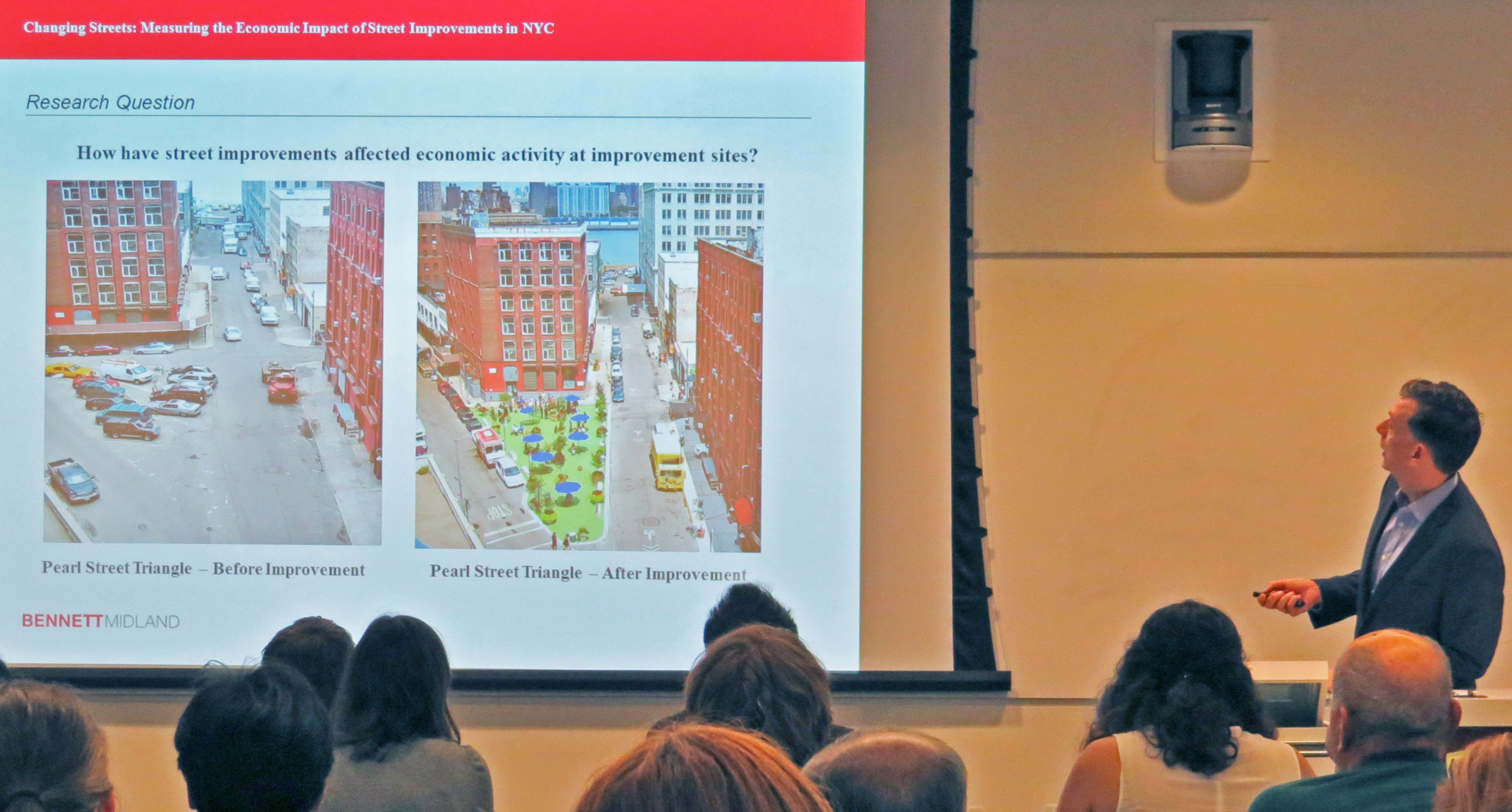Eric Lee, the president of management consulting firm Bennett Midland LLC, visited the Lewis Center this week to present his firm’s innovative work regarding the economic impacts of reallocation of street space in New York City for dedicated bikeways, pedestrian improvements, and bus lanes.
Mr. Lee first set the stage by showing pictures of the types of projects considered in the study. Quite dramatic changes, such as parking-protected bikeways and the conversion of parking into pedestrian plazas, have taken place in New York City in recent years. Mr. Lee’s research concerns the question, “Will these changes hurt economic activity?”
Mr. Lee’s presentation was an overview of the study methodology and findings. Sales tax receipts provided a direct and impartial measure of economic activity. Mr. Lee’s firm compared sales tax receipts on 11 study corridors with comparison corridors — chosen by a typology to have similar scale and use — as well as with borough-wide sales tax data. Only retail and service-oriented businesses were included in the analysis, because these businesses depend upon customer access (whether by private vehicle, bus, bike, or walking). Mr. Lee displayed some examples of graphs showing retail sales tax receipts over the course of the study. Tax receipts on a study corridor, a comparison corridor, and borough-wide receipts would be shown on the graph, offering the audience an immediate visual of how the corridor’s economic activity compared. These graphs included a data point for every quarter and extended for several years. Mr. Lee emphasized the ultimate finding of the study: 8 out of 11 study corridors outperformed comparison sites, which indicates that street improvements “do no harm” to economic activity.
A long and lively question-and-answer session followed Mr. Lee’s talk. Attendees included a member of the California State Assembly, as well as staff from a wide variety of local agencies. These included the Los Angeles Department of Transportation, the Los Angeles Department of City Planning, the Los Angeles County Department of Public Health, and the City of Santa Monica. There is considerable interest, both locally and nationally, in the question of economic impact and in quantitative data analyses that examine this question.
